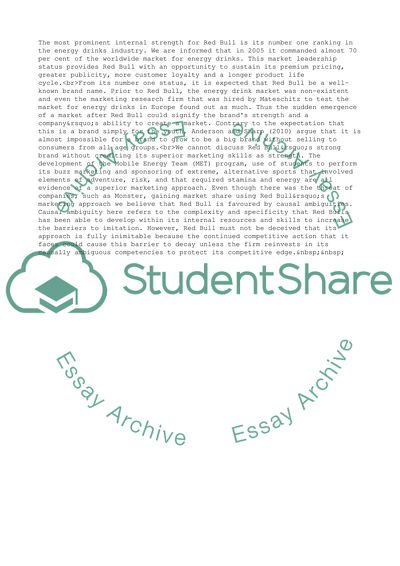Cite this document
(Potential Internal Strengths of Red Bull Case Study - 14, n.d.)
Potential Internal Strengths of Red Bull Case Study - 14. Retrieved from https://studentshare.org/business/1744876-strategic-management
Potential Internal Strengths of Red Bull Case Study - 14. Retrieved from https://studentshare.org/business/1744876-strategic-management
(Potential Internal Strengths of Red Bull Case Study - 14)
Potential Internal Strengths of Red Bull Case Study - 14. https://studentshare.org/business/1744876-strategic-management.
Potential Internal Strengths of Red Bull Case Study - 14. https://studentshare.org/business/1744876-strategic-management.
“Potential Internal Strengths of Red Bull Case Study - 14”, n.d. https://studentshare.org/business/1744876-strategic-management.


